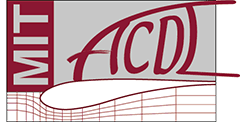ABSTRACT: Liquid droplets sliding along solid surfaces are a frequently observed phenomenon in nature, e.g., raindrops on a leaf, and in everyday situations, e.g., drops of water in a drinking glass. Furthermore, sliding droplets (and consequently the suppression of those) are crucial in many applications such as the deicing of planes, coating and separation processes or lab-on-a-chip devices. In this talk, we will at first present a phase field model and solution schemes for detailed and energy-consistent simulations of two phase flows involving moving contact lines. The dynamics of the two-phase flow are described by the Cahn-Hilliard (CH) equation and coupled to the Navier-Stokes (NS) equations. In addition, boundary conditions which allow for dynamic contact angle hysteresis and slip between the moving contact lines and the solid surface are applied. As the resulting model forms a very tightly coupled and nonlinear system of equations the discretization and solution strategy is carefully selected to allow efficient and accurate simulations. Furthermore, anisotropic mesh refinement is conducted during the simulation to increase the spatial accuracy and reduce the computational effort for the detailed simulations. We discuss several results of droplets which slide along solid surfaces as well as get pinned on sharp topographic structures.
In the second part, we present the structure and first results for the optimal control of droplets on solid surfaces. For some time now there have been experimental approaches to utilize a specific contact angle distribution of the surface to influence the speed and the path as well as the wetting of the drops. This allows to set specific residence times of sliding drops on inclined surfaces. In our objective function, the specification of a desired drop shape and position is considered and the static contact angle distribution acts as the control variable. For efficient, gradient-based optimizations we derive the adjoint equations for the CHNS model including the boundary conditions. Finally, we end the talk with some ideas on the application of the CHNS model to infer complex physical parameters like surface tensions and contact angles from data obtained by simple and cheap experiments.
Keywords: Contact line dynamics, Phase field modeling, Cahn-Hilliard-Navier-Stokes, Pinning, Contact Angle Distribution, Inverse Problem

